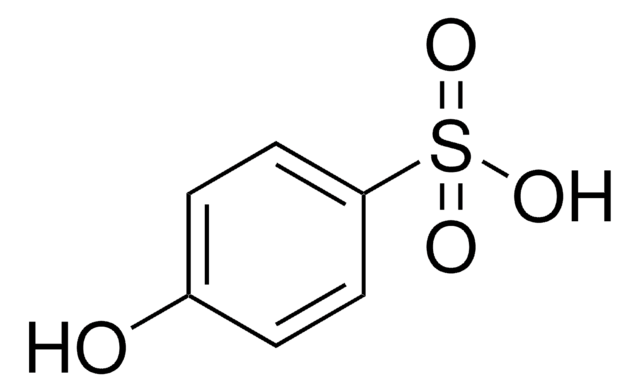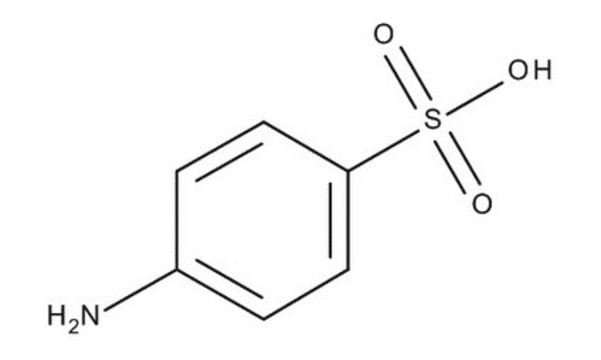165794
3-Aminobenzenesulfonic acid
97%
Sinónimos:
Metanilic acid
About This Item
Productos recomendados
assay
97%
form
powder
mp
>300 °C (lit.)
solubility
ethanol: very slightly soluble(lit.)
methanol: very slightly soluble(lit.)
SMILES string
Nc1cccc(c1)S(O)(=O)=O
InChI
1S/C6H7NO3S/c7-5-2-1-3-6(4-5)11(8,9)10/h1-4H,7H2,(H,8,9,10)
InChI key
ZAJAQTYSTDTMCU-UHFFFAOYSA-N
¿Está buscando productos similares? Visita Guía de comparación de productos
General description
Application
signalword
Warning
hcodes
Hazard Classifications
Acute Tox. 4 Dermal - Acute Tox. 4 Inhalation - Acute Tox. 4 Oral
Storage Class
13 - Non Combustible Solids
wgk_germany
WGK 1
flash_point_f
Not applicable
flash_point_c
Not applicable
ppe
dust mask type N95 (US), Eyeshields, Gloves
Certificados de análisis (COA)
Busque Certificados de análisis (COA) introduciendo el número de lote del producto. Los números de lote se encuentran en la etiqueta del producto después de las palabras «Lot» o «Batch»
¿Ya tiene este producto?
Encuentre la documentación para los productos que ha comprado recientemente en la Biblioteca de documentos.
Los clientes también vieron
Nuestro equipo de científicos tiene experiencia en todas las áreas de investigación: Ciencias de la vida, Ciencia de los materiales, Síntesis química, Cromatografía, Analítica y muchas otras.
Póngase en contacto con el Servicio técnico









